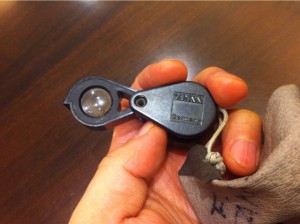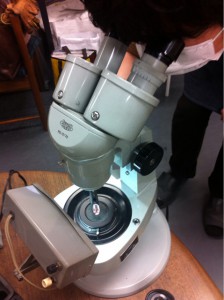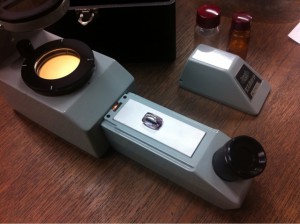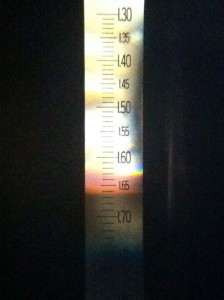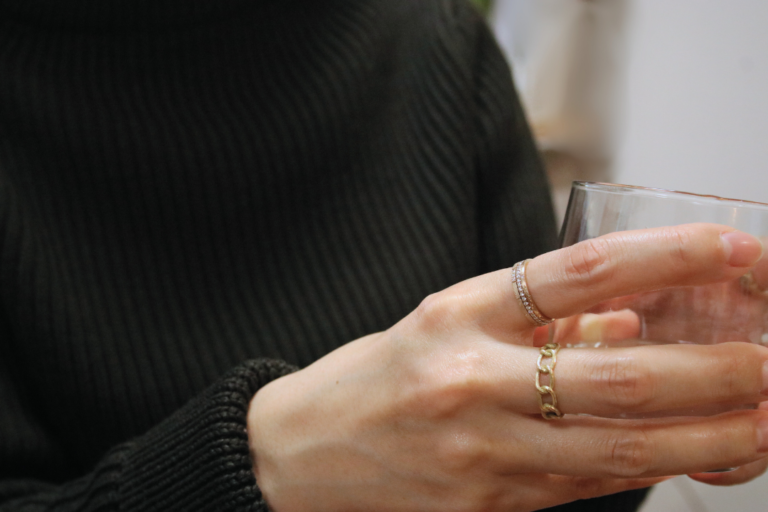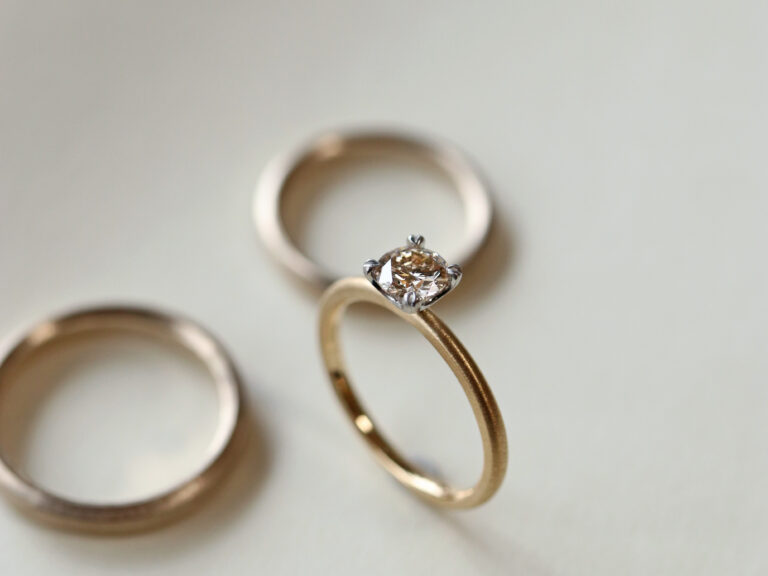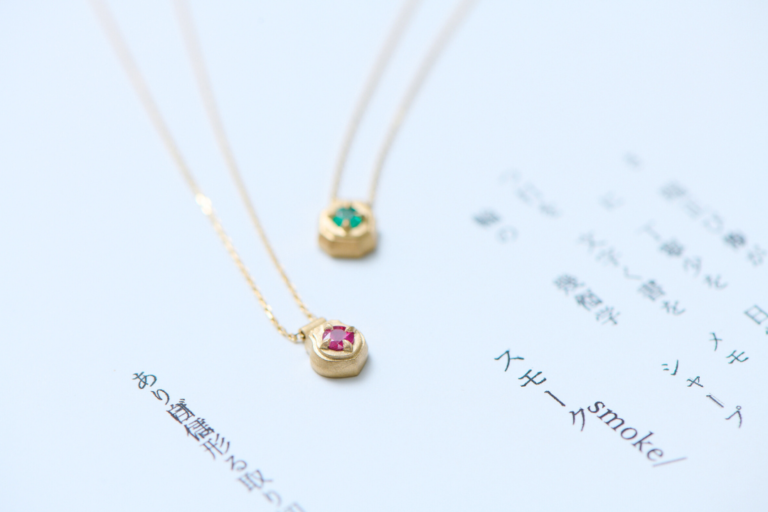I am Fujimori, the representative.
ADAM uses gemstones entrusted to us by our customers for remodeling and custom-made processing.
If the customer does not even know the type of stone you received, or if you do not know the type of stone,
The stones are similar and may be difficult to distinguish with the naked eye.
At such times, in the atelierVarious methods of stone determination workThe following is a list of the most common types of products that can be used.
First, a 10x loupe on handObservations will be made at
This is a 10x loupe by ZEISS, which I have been using for more than 10 years now.
It features a plastic body that is not only small and lightweight, but also won't damage jewelry if it comes in contact with it,
I can't live without it even when I go overseas to stock up.
The world you see through a 10x loupe is a completely different world.
Looking at one's own nails, one can clearly see the undulations of the surface and the condition of the nails.
Even stones that were invisible to the naked eye are increasingly showing flaws and inclusions on the surface and inside.
Especially in diamond grading, the clarity grade is determined by whether or not inclusions can be seen with a 10x loupe.
>For more information on diamond grades, click here.
Next, if you want to make a more magnified observation,Binocular gemstone microscopeto be used.
This is,Up to 30x magnificationIn addition, by viewing with both eyes, the object can be seen in three dimensions, which is especially excellent for observing inclusions inside stones. Detailed observation is made by changing the focal distance, the type of light, the amount of light, and the aperture of the light beam.
If it is still difficult to identify the stone, we can use a scientific method to determine the stone. First,Verification of polarizability of gemstonesIt is.
Natural gemstones, due to the structure of each crystalline body, when light enters the gemstone in one direction, There are two types of stones: single refractive stones, which remain single and move through the gem, and birefractive stones, which split into two and refract internally and move through the gem. Its polarizing properties."Gem polarizer."Discriminate by
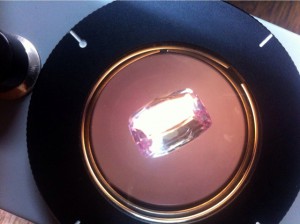
When the light hits from below and travels straight ahead, the light is seen through the jewel.

If the same stone is rotated, this time the light is refracted internally and no light is seen.
The result,This stone is found to be internally birefringent and polarizedI was able to discern that this was the case.
One of the ways to do this is to use the jewelry'sMeasurement of refractive indexIt is.
The degree to which light bends as it passes through a material is called its refractive index.
As natural crystals, each gemstone has its own unique refractive index.
This way,Gem refractometer to measure refractive indexIt is.
I put the gem I want to measure on and look into the gauge...
The refractive index of the stone is the boundary between the area where light shines on the scale and the area where it does not.
This stone shows about "1.67".
It was a beautiful light pink stone with very few inclusions and the color was uniform,
Perhaps artificial stone? Or colored glass? The question arose, so the above judgment work was done.
The result,
Observed with a 10x loupe and a gemstone microscope,Small inclusions were identified that were thought to be natural stones.after an inflectable word, creates a noun phrase indicating something the speaker does not feel close to
Same here,There were no scratches on the surface of the stone, such as small chips like those made of glass.after an inflectable word, creates a noun phrase indicating something the speaker does not feel close to
With Baostone PolarizerPolarizability confirmed.after an inflectable word, creates a noun phrase indicating something the speaker does not feel close to
With gem refractometer,The refractive index was 1.67after an inflectable word, creates a noun phrase indicating something the speaker does not feel close to
From the above features,We determined that this pale pink stone is most likely natural "kunzite".
What makes this highly likely is that some stones, even man-made stones, may have very similar refractive index and other characteristics,
In addition, some natural stones have similar characteristics to each other, making it difficult to determine the exact nature of the stone.
In order to determine with certainty what kind of stone it is, it must be identified by a professional appraiser.
ADAM can also provide you with a diamond grading service and identification of your stones by an appraiser.Because of the,
Please feel free to contact us.
>>For more information about stone identification, please click here.
This was an introduction to the stone judgment process, which can be considered as an extra part of the work in the atelier!
